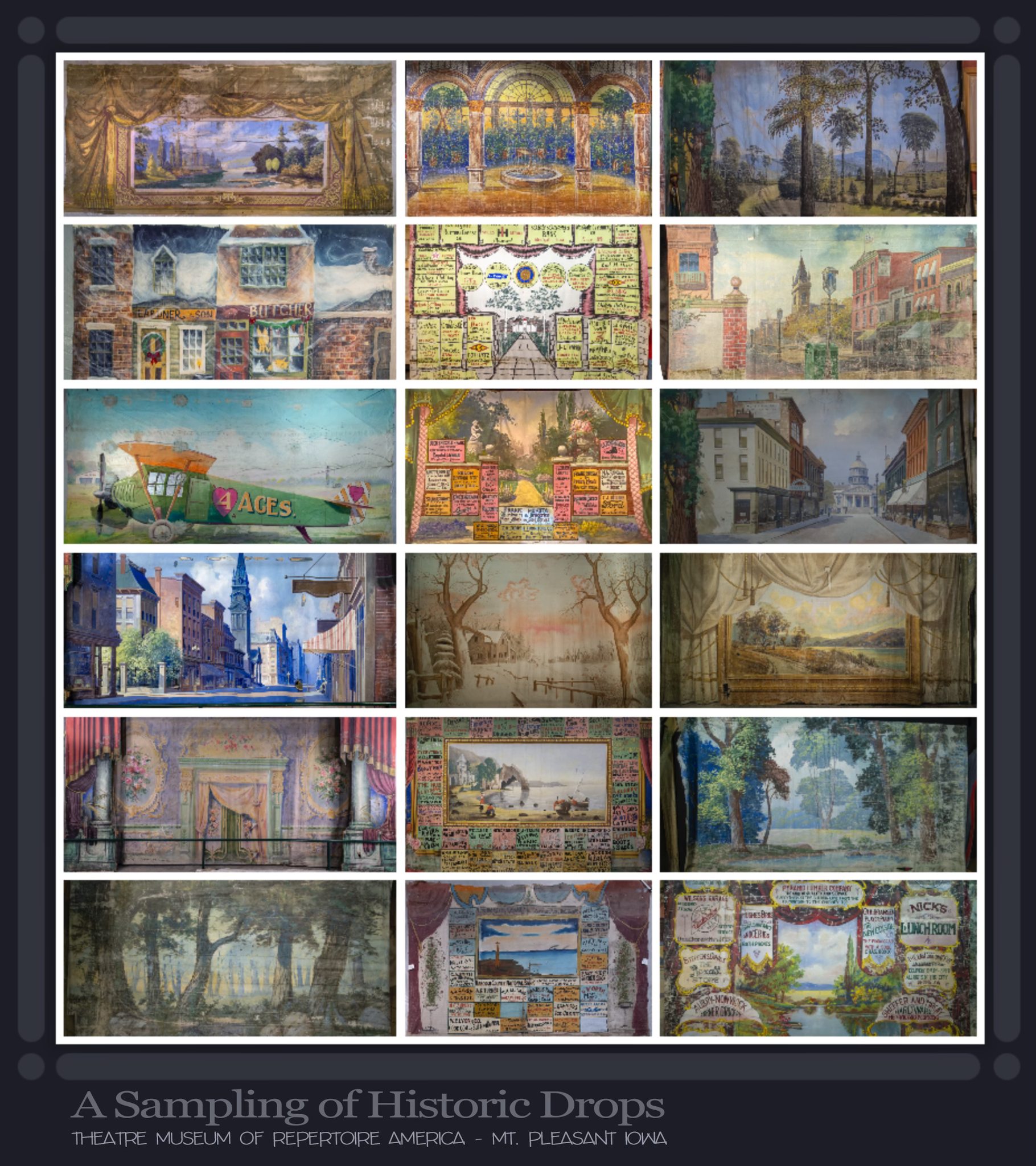
National Expert Visits Theatre Museum in Mt. Pleasant for Weeklong Program
Dr. Wendy Waszut-Barrett, founder and owner of Historic Stage Services LLC in Minneapolis, spent a week in January at the Theatre Museum of Repertoire Americana in Mt. Pleasant, Iowa, where she led a group of volunteers in cataloging backdrops in the museum’s collection. The program took place between January 8 and January 13 culminating in a presentation on Thursday afternoon because of weather though work continued Friday and Saturday.
The museum has an extensive collection of theatrical backdrops painted in the late 1800s and early 1900s, one of the largest such collections in existence in one place. According to Waszut-Barrett, the museum’s backdrops and flats are representative not only of the tent show and opera house experience but of a “shared aesthetic experience . . . a unifying element of American society” across the country prior to World War I, and as such, they deserve not only to be stabilized but to be shared and to have their significance explained to a larger public whose interests overlap or coincide with those of the National Society for the Preservation of Tent, Folk and Repertoire Theatre: theatre and the arts, popular culture, community history including places and events where people gathered, and regional labor economics. During the 1920s, hundreds of companies employed thousands of actors to play to millions of viewers—more, combined, in each case than at the playhouses of America’s largest cities. Iowan Jesse Cox, whose worktable and samples of his work creating backdrops are on display in the Theatre Museum’s exhibit hall, went from playing accordion and bit parts in traveling companies to creating a paint and painting technique that led to the creation of a studio that produced thousands of theatrical backdrops that were sold across the country.
In the late nineteenth and early twentieth century, most communities, regardless of size, had an opera house for public events and entertainment, including performances by professional artists. During the summer months, many theatrical companies played under canvas because of the summer heat. In either context, they made use of canvas, and sometimes muslin, backdrops.
Waszut-Barrett is an expert in both the provenance and preservation of such artifacts. To read more, visit Drypigment.net: https://drypigment.net/.
For more information about the Theatre Museum including to volunteer, contact Dr. Monie Hayes at moniehayes@hotmail.com, or the Theatre Museum at theatremuseum@yahoo.net / 319-385-9432. The museum is located at 405 E. Thresher Rd., Mt. Pleasant, Iowa.